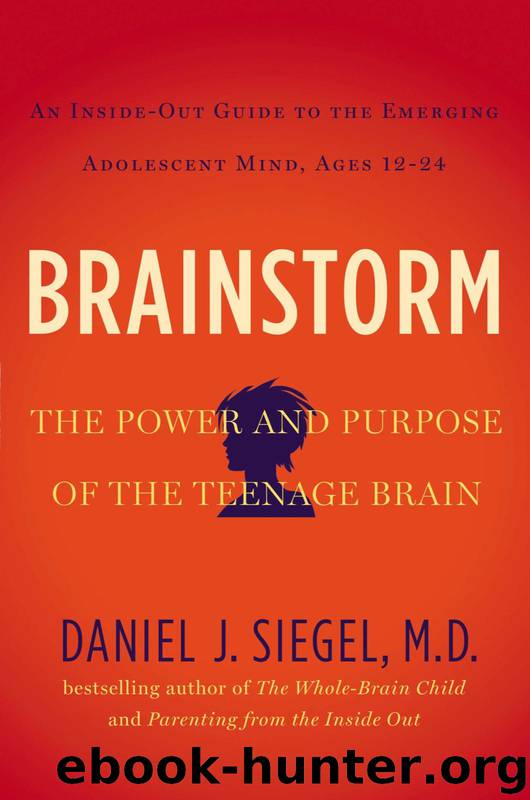Brainstorm by Daniel J. Siegel MD

Author:Daniel J. Siegel, MD
Language: eng
Format: mobi, epub
Publisher: Penguin Group US
Published: 2013-12-26T05:00:00+00:00
Reflecting on Your Attachments and Making Sense of Your Life
Whether you are an adolescent or an adult, it is important to make sense of what your early attachment relationships were like in your childhood. Given the nature of memory development before the age of five or so, it can be hard to recall in any continuous way from this very early period in our lives. This said, even the faintest impressions can be quite helpful. And research shows, too, that a set of questions that support your exploration of what you can recall can help reveal certain patterns that are helpful in your journey to get a broad sense of the attachment models you may have now in your life. The fantastic news is that if you can make sense of your childhood experiences—especially your relationships with your parents—you can transform your attachment models toward security. The reason this is important is that your relationships—with friends, with romantic partners, with present or possible future offspring—will be profoundly enhanced. And you’ll feel better with yourself, too!
In science we use a formal Attachment Interview to figure out how a person has made sense of his or her attachment experiences. Hundreds of studies reveal that these patterns are helpful to gain insight into our attachment models. My own work in that field led me to develop a way to help people make sense of their lives and propose how this process may integrate their brains in psychotherapy, and I published that approach in a couple of books, including Mindsight and Parenting from the Inside Out. The latter book includes a set of questions that I’ve adapted here for you to use as a guide for reflecting on your own experience, whether you are an adolescent or an adult. Let me invite you to read over these questions, and afterward we’ll go through each of the models of attachment and the kinds of responses they tend to include, and then we’ll see how you can understand them and move them toward security. Remember, you may have many models of attachment, one for each relationship you have had with your caregivers. You may want to write your responses down in a journal, or simply reflect on them in your own way. Because you may still be living with your attachment figures, your parents or others, or you may have moved away from them, the questions are both in the present tense and in the past tense. Just focus on whichever one applies to your situation now.
Download
This site does not store any files on its server. We only index and link to content provided by other sites. Please contact the content providers to delete copyright contents if any and email us, we'll remove relevant links or contents immediately.
The Art of Thinking Clearly by Rolf Dobelli(10214)
The 5 Love Languages: The Secret to Love That Lasts by Gary Chapman(9588)
Mindhunter: Inside the FBI's Elite Serial Crime Unit by John E. Douglas & Mark Olshaker(9192)
Becoming Supernatural by Dr. Joe Dispenza(8119)
Nudge - Improving Decisions about Health, Wealth, and Happiness by Thaler Sunstein(7615)
The Road Less Traveled by M. Scott Peck(7522)
Enlightenment Now: The Case for Reason, Science, Humanism, and Progress by Steven Pinker(7228)
Mastermind: How to Think Like Sherlock Holmes by Maria Konnikova(7225)
Win Bigly by Scott Adams(7094)
The Way of Zen by Alan W. Watts(6505)
Factfulness: Ten Reasons We're Wrong About the World – and Why Things Are Better Than You Think by Hans Rosling(4693)
The State of Affairs by Esther Perel(4637)
Gerald's Game by Stephen King(4577)
Man's Search for Meaning by Viktor Frankl(4420)
The Confidence Code by Katty Kay(4187)
Thinking in Bets by Annie Duke(4152)
The Healing Self by Deepak Chopra(3473)
Hidden Persuasion: 33 psychological influence techniques in advertising by Marc Andrews & Matthijs van Leeuwen & Rick van Baaren(3472)
The Worm at the Core by Sheldon Solomon(3433)
